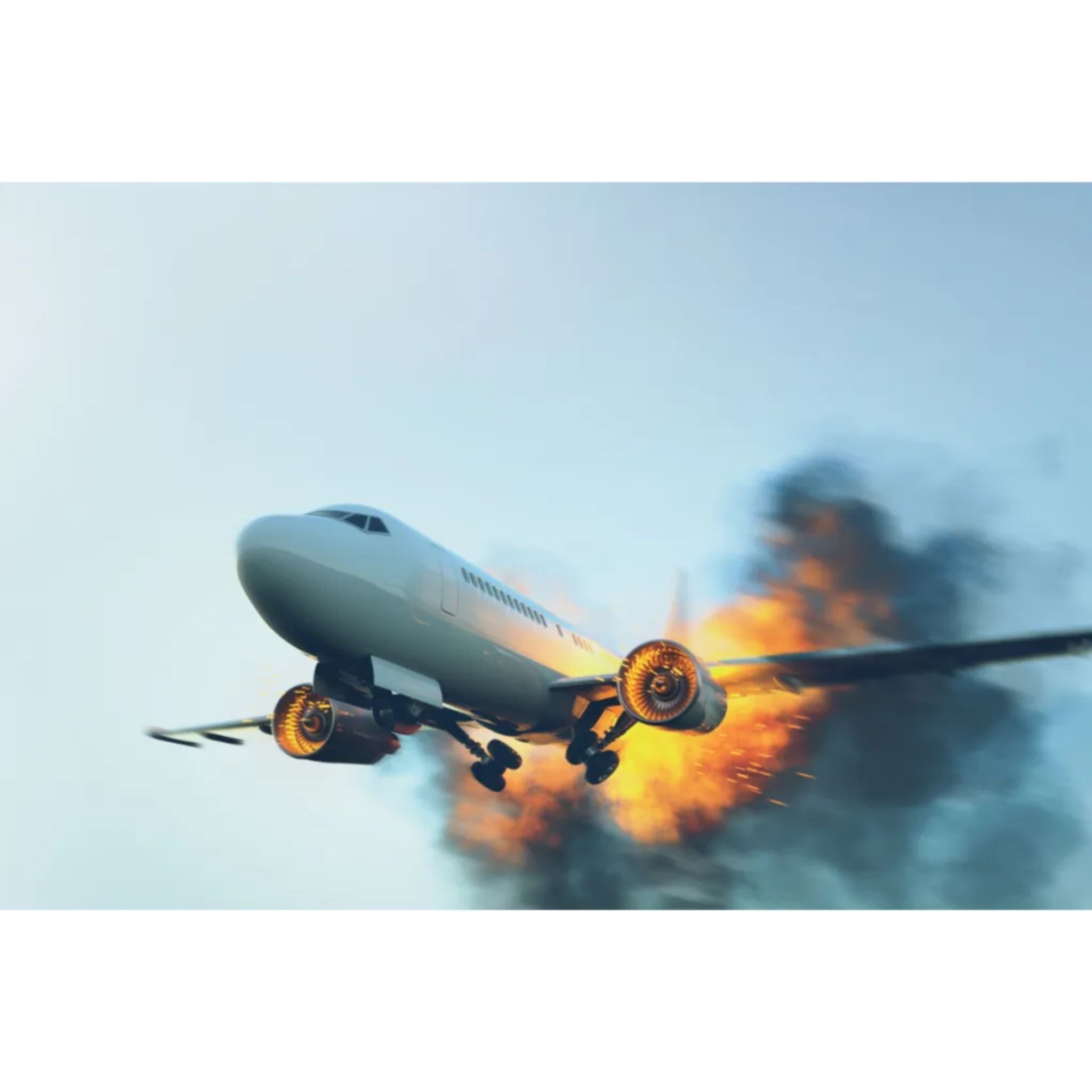
What Happens If Both Engines Fail on a Plane? The real Truth
It’s one of the most terrifying thoughts a traveller can have at 35,000 feet — what if both engines stop working? The idea of an aircraft losing all power mid-air sounds like certain disaster, but here’s the surprising truth: a plane can glide safely, for a long distance, even with zero engine thrust.
Commercial pilots train extensively for this exact situation, and modern aircraft are designed to handle it far better than most people realize. Let’s unpack what really happens if both engines fail — step by step, and without the Hollywood drama.
The First Few Seconds: Glide, Don’t Fall
When engines stop, a plane doesn’t just drop out of the sky. It becomes a glider. The wings continue to produce lift as long as the aircraft maintains forward airspeed. Pilots immediately pitch the nose to a specific “best glide speed” — the speed that allows the aircraft to travel the farthest possible distance while descending at the slowest rate.
For a modern airliner, that glide ratio is roughly 15:1. That means for every 1,000 feet of altitude lost, the plane can travel about 15,000 feet (nearly three miles) forward. From a typical cruising altitude of 35,000 feet, that gives pilots more than 100 miles of potential gliding range.
So even in total engine failure, they have time — often 15 to 20 minutes — to troubleshoot, communicate, and plan a safe landing.
What Pilots Do Immediately
The cockpit checklist for “dual engine failure” kicks in instantly. Pilots are trained to follow a clear sequence:
-
Fly the aircraft first. Maintain control, establish glide speed, and stabilize the descent.
-
Attempt engine restart. Jet engines can flame out due to fuel imbalance, bird strikes, or severe weather, but sometimes they can be restarted. Pilots follow specific restart procedures while monitoring altitude.
-
Communicate with air traffic control. A “Mayday” call alerts controllers, who then clear nearby airspace and suggest nearby airports or runways.
-
Prepare for landing. Whether that’s at an airport, a long stretch of highway, or open water, pilots identify the safest reachable option.
Emergency Systems That Keep the Plane Alive
Even without engines, a commercial jet isn’t “dead.” It’s equipped with backup power systems designed for exactly this kind of emergency.
One of the most critical is the RAT — Ram Air Turbine. It’s a small propeller that automatically deploys from the fuselage, using the rushing air to generate electricity and hydraulic pressure. This powers the essential instruments, flight controls, and radios so the crew can continue to fly safely.
In addition, the APU (Auxiliary Power Unit) — a small engine located in the tail — can sometimes be started mid-flight to restore limited power or restart the main engines.
Real-Life Examples of Engine Failure
History shows just how well-trained pilots handle these moments.
-
The “Gimli Glider” (Air Canada Flight 143) ran out of fuel mid-air in 1983 due to a metric conversion error. Both engines stopped at 41,000 feet. The pilots glided the Boeing 767 for 17 minutes and landed safely on an abandoned airstrip in Manitoba — with no serious injuries.
-
US Airways Flight 1549, better known as the “Miracle on the Hudson,” lost both engines after striking geese shortly after take-off in 2009. Captain Chesley “Sully” Sullenberger glided the Airbus A320 into the Hudson River, saving all 155 people on board.
-
British Airways Flight 9 flew through volcanic ash in 1982, losing all four engines over Indonesia. The crew successfully restarted them after descending to cleaner air and landed safely.
These incidents prove that “dual engine failure” doesn’t automatically mean catastrophe — it means quick thinking, skill, and well-rehearsed teamwork.
How Far Can a Plane Glide Without Engines?
At cruising altitude, a Boeing 777 can glide over 120 miles, while an Airbus A320 might manage around 100 miles, depending on conditions. Tailwinds, air temperature, and aircraft weight can slightly affect these numbers, but the bottom line is the same: there’s plenty of room to manoeuvre and reach a safe landing site.
That’s why modern flight routes are carefully planned — aircraft are almost always within range of a diversion airport.
Can It Happen Today?
Engine failures are extremely rare thanks to modern design and maintenance standards. Jet engines are built to withstand heavy rain, hail, and even birds. They’re tested at maximum power for hundreds of hours before entering service. The odds of both engines failing on a twin-engine jet are astronomically low — around one in several billion flight hours.
Still, aviation safety operates on the principle of “what if.” Every pilot trains repeatedly in simulators for total engine-out scenarios. It’s not just theory — it’s muscle memory.
The Bottom Line
If both engines fail on your flight, it’s not instantly fatal — far from it. Pilots have time, tools, and training to glide, communicate, restart, and land safely. The aircraft remains controllable, the systems stay alive, and history proves that even in the most dramatic situations, skill and calm decision-making save lives.
The next time you’re flying and feel turbulence or hear a sudden noise, remember this: commercial aviation is one of the most resilient and redundant systems ever designed. Even when the engines stop, the sky doesn’t fall.



Leave a comment
This site is protected by hCaptcha and the hCaptcha Privacy Policy and Terms of Service apply.